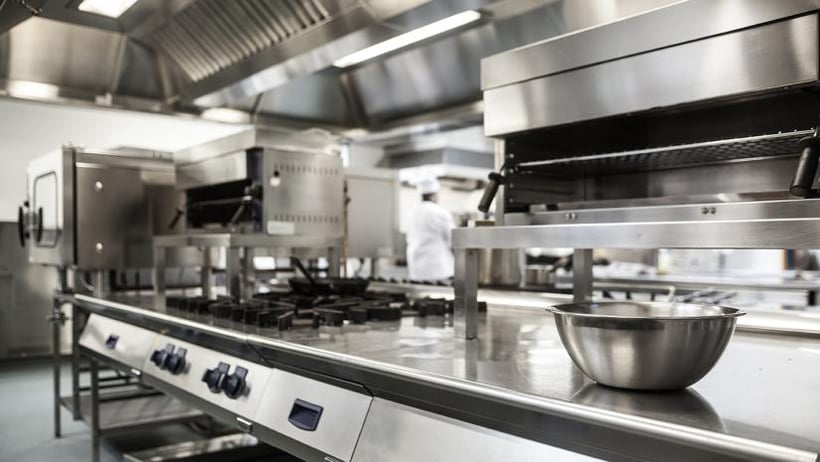
With rounds of lockdowns requiring restaurant closures during the COVID-19 pandemic, many restaurants shifted their business model away from traditional brick-and-mortar to online takeout and delivery-only. This led to a rise in a different type of kitchen, designed for that demand: the ghost kitchen.
Ghost kitchens, dark kitchens, cloud kitchens – no matter the name, these commercial kitchen spaces provide efficient and affordable options versus the brick-and-mortar model. Learn more about what a ghost kitchen is and explore the three different types below.
What exactly is a Ghost Kitchen?
A ghost kitchen is a food service space designed for take-away or delivery food businesses. While still a fairly new concept, ghost kitchens are on the rise as online food delivery continues to grow. This year, Canadian revenue within the online food delivery segment is projected to reach over $8 billion, with an annual growth rate of 11.45%. Also seeing a rise in popularity are individuals looking to start their own food businesses, in search of alternatives to the traditional restaurant model, which can be costly and hard to maintain.
Ghost Kitchens vs. Traditional Restaurant Kitchens
The biggest difference between ghost and regular kitchens is format – specifically, efficiency in flow and design. Some ghost kitchens are sections or offshoots of traditional kitchens, while others are prefabricated pods. All are designed to streamline food preparation and enable fast turnaround time for a food delivery model.
Understanding the 3 Types of Ghost Kitchens
- Incubator or Pop-Up: An incubator or pop-up model is connected to a restaurant's regular kitchen but focuses on online and delivery orders. Typically, a separate workflow is set up within the existing framework, which reduces costs and the pressure on the main crew supporting the brick-and-mortar restaurant orders. This type of ghost kitchen is ideal for restaurants looking to test out new concepts or align the business with trends that may arise in the marketplace, without alienating loyal customers or significantly altering the existing menu. These models can also be found within kiosks or food trucks.
- Shared or Commissary: Shared or Commissary kitchens are owned and operated by third-party companies or entrepreneurs as opposed to restaurants. These owners rent out their spaces to one or multiple restaurants at one time. Commissaries are typically outfitted with cooking space, storage space, ventilation, sinks and cleaning supplies. Some come with additional equipment and storage lockers. This model is one of the most popular ghost kitchens as they provide the equipment, space and setup at a fraction of the investment otherwise needed.
- Kitchen Pods: For a low-budget, quick-to-execute option that requires minimal space, a pod might be the ideal solution. These are mobile containers that come with pre-installed kitchen accessories such as appliances, plumbing and prep space. There are some additional considerations with this model, such as zoning laws that might limit where the pod can be installed. If exploring this option, additional research is key.
No matter which format one chooses, food safety standards and practices are critical components to success, especially in a shared environment. Incubators and commissaries are more likely to have food safety and handling requirements and standards in place; however, pod kitchens can be more challenging when it comes to food safety, particularly in an environment with no windows. When considering the possibility of working within a ghost kitchen, ensure proper cleaning practices are followed, and train any and all staff in food handling to protect your business and keep your customers safe.





